Special Report
Don’t Stock Up on These 20 Fast-Spoiling Foods During the Pandemic

Published:

Grocery shopping used to be an errand or a chore — just another thing to do once or twice a week or whenever we needed more cereal or beer. These days, as we struggle to stay safe and sane while the coronavirus pandemic upends life as we once knew it, the essential act of buying food has become a challenge. Restricted store hours and occupancy limits, product shortages, and worries about possible contagion have made the process difficult, unpleasant, and (for those at high risk) even dangerous. (Most Americans say that the coronavirus outbreak has impacted their lives.)
One thing almost everyone agrees on is that whether we go shopping ourselves or use a delivery service to bring groceries to the doorstep, it’s important, now more than ever, to shop smart. In part, that means minimizing trips to the store or cutting down on home deliveries by stocking up on foods that have a long shelf life.
It might also mean temporarily forgoing foods that spoil quickly, or buying them only in small quantities for more or less immediate use. Fortunately, one of the upsides of being self-quarantined is that people are cooking for themselves more, so using ingredients up quickly is easy. For instance, consider these 12 easy recipes to feed your family and make your house smell good while you’re sheltering in place.
It’s always a bad idea to have to throw food away, but it seems especially irresponsible under present circumstances. Unfortunately, we have a history of doing it a lot; the U.S. occupies a prominent place on the list of countries that waste the most food.
Click here to see 20 foods to not buy when you’re self-isolating.
Click here to see our detailed findings and methodology.
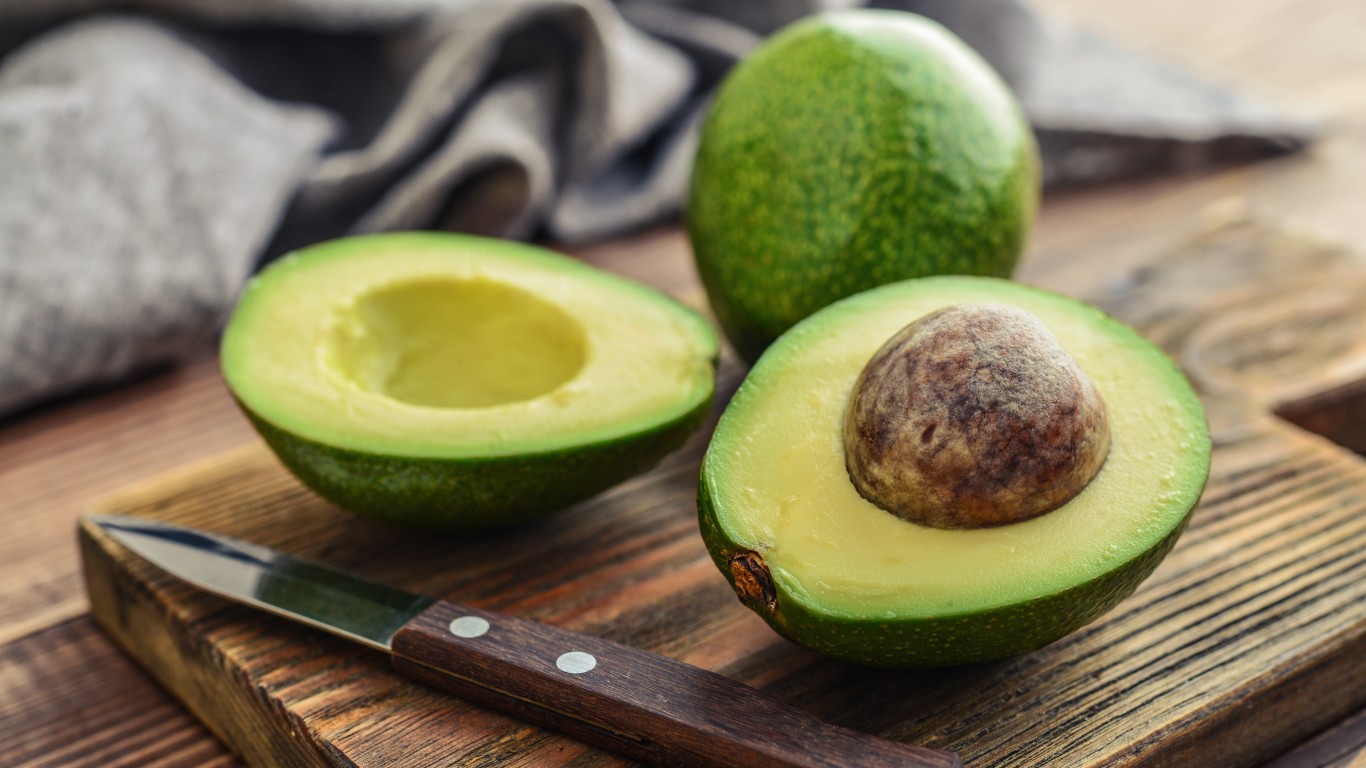
1. Avocados
Avocados look sturdy, but they can go from inedibly firm to squishy and spoiled in a matter of days. If you want to slow the ripening process a bit, store avocados in the refrigerator, or leave them (uncut) in an airtight covered bowl with a whole lemon or a couple of limes.
[in-text-ad]
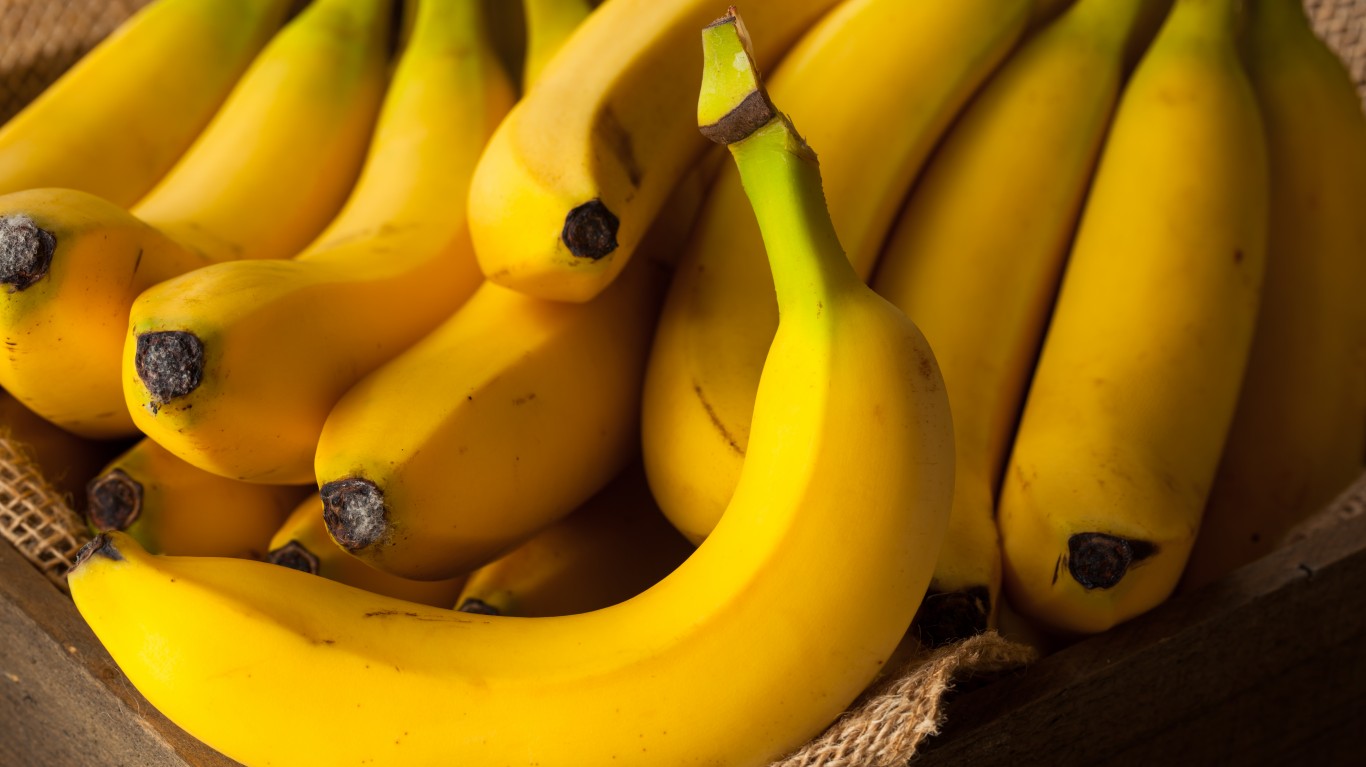
2. Bananas
Bananas can turn from green and hard to brown-speckled yellow and mushy in two or three days’ time. The process accelerates if you keep unripe bananas near fully ripened ones, because the ripe fruit gives off ethylene gas, hastening the ripening process. It’s worth remembering, though, that bananas are still perfectly edible even if their flesh has become soft and brown — not so much for just peeling and eating, but for use in desserts, banana bread, even tropical cocktails.

3. Berries
Berries — and especially raspberries — are delicate fruits, susceptible to mold and mildew. Once mold starts to form on a few berries, it’s safest to discard them all, as it spreads fast and can be hard to see.
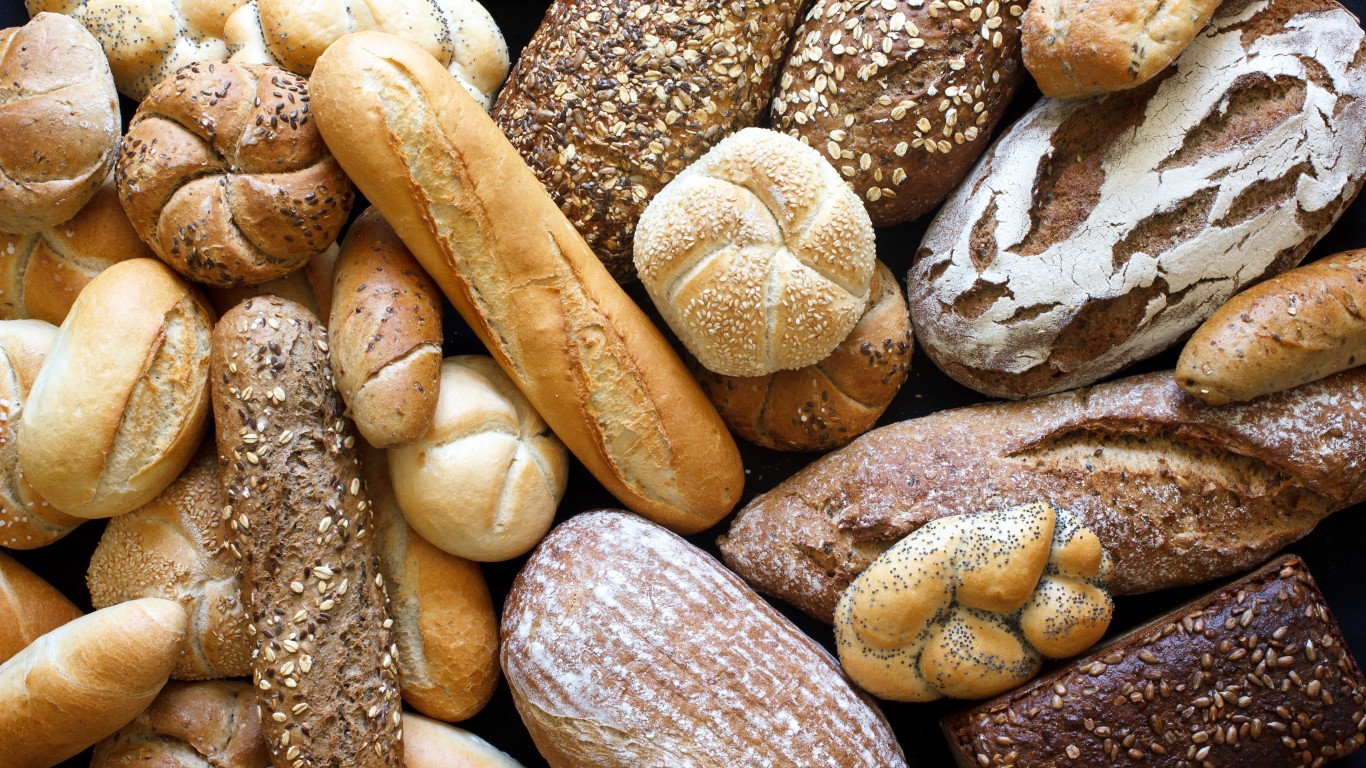
4. Bread
Commercial supermarket bread, loaded with preservatives, lasts a long time. Artisanal or home-baked loaves, on the other hand, can spoil quickly. Mold forms on it, especially once it’s been cut into, and particularly in humid climates. Most kinds of bread mold aren’t dangerous, but some can produce harmful mycotoxins, so the USDA advises tossing the whole loaf out if it develops blue- or green-and-white splotches. If the mold is the dangerous kind, just cutting it off isn’t sufficient, as the spores may have spread invisibly throughout the rest.
[in-text-ad-2]

5. Cooked grains
Rice, quinoa, wheat berries, farro, and other cooked grains will last several days in tightly sealed containers in the refrigerator, but can spawn bacteria quickly if left out at room temperature, covered or not. If they’ve sat out for more than a couple of hours, they should be discarded even if they look and smell fine.

6. Cooked rice
Bacteria loves moisture, and rice absorbs a lot of water when it cooks. As with almost any leftovers, rice not eaten at a meal should be refrigerated in a covered container as soon as possible. Refrigeration generally doesn’t kill bacteria, though — it just slows its growth — so experts counsel that cooked rice shouldn’t be kept in the fridge for more than three days.
[in-text-ad]
7. Corn on the cob
Corn on the cob is susceptible to mold. These usually start at the cob’s pointed end and if that is cut off, the corn is still fine to eat. If the mold extends below the tip, however, the whole cob should be discarded. Mold aside, there’s another reason to use this vegetable as fast as possible” When sweet corn is first picked, it’s high in sugar and low in starch, but the balance starts reversing almost as soon as it’s off the stalk. Corn eaten several days, or even weeks, after it’s been picked can be unpleasantly starchy and nowhere near as sweet as expected.
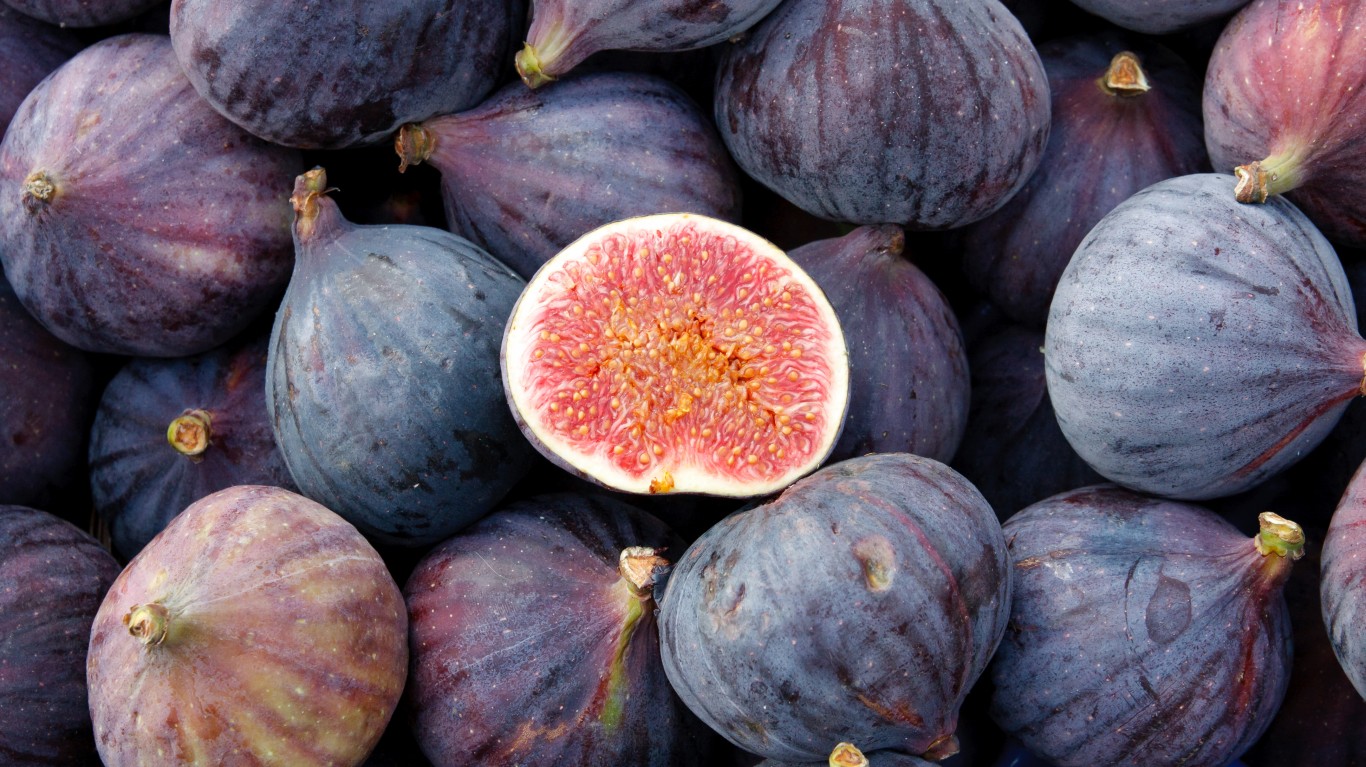
8. Fresh figs
Figs don’t ripen much after they’re picked, so farmers tend to leave them on the trees until the last minute. Thus they’re generally ready to eat the moment they’re harvested, and it may take another week or ten days for them to reach markets — by which time they’ll be near the end of their lives as edible fruit.
9. Fresh herbs
Fresh herbs get limp and soggy quickly in the refrigerator crisper drawer, and shrivel and dry up if you leave them out on the counter. Experts suggest that you treat them like flowers, cutting off the root ends and standing them up in a jar of water. While this will make them last longer, they begin to lose some flavor and aroma almost immediately, so it’s best to use them as soon as possible.
[in-text-ad-2]

10. Ground meat
Grinding introduces tiny air pockets into the meat, so ground beef, lamb, turkey, and the like will go bad faster than the same protein in solid form. No matter what the sell-by or use-by date may be, it’s good practice to either cook or freeze ground meat within a day of purchase. If the meat smells strange or has a slimy surface, it’s probably spoiled and should be thrown away.

11. Hard-boiled eggs
The natural bloom on the surface of fresh raw eggs helps seal their porous shells against bacteria and oxygen, and they can easily last — if you don’t wash them — for at least two weeks at room temperature and as long as three months in the refrigerator. The same isn’t true for eggs once they’re hard-boiled, though. They’ll go bad in a few hours at room temperature, and won’t last more than a week even in the refrigerator.
[in-text-ad]

12. Iced tea
The Centers for Disease Control and Prevention (CDC) recommends that iced tea should be kept for no more than eight hours, even in the refrigerator. The problem is that improperly cleaned vessels or even raw tea leaves may be contaminated with bacteria, and if the tea isn’t brewed hot enough to begin with (the CDC recommends 195ºF for three to five minutes), these may survive into the finished product. The risk is higher for so-called sun tea because the brewing process gives bacteria more time to develop.
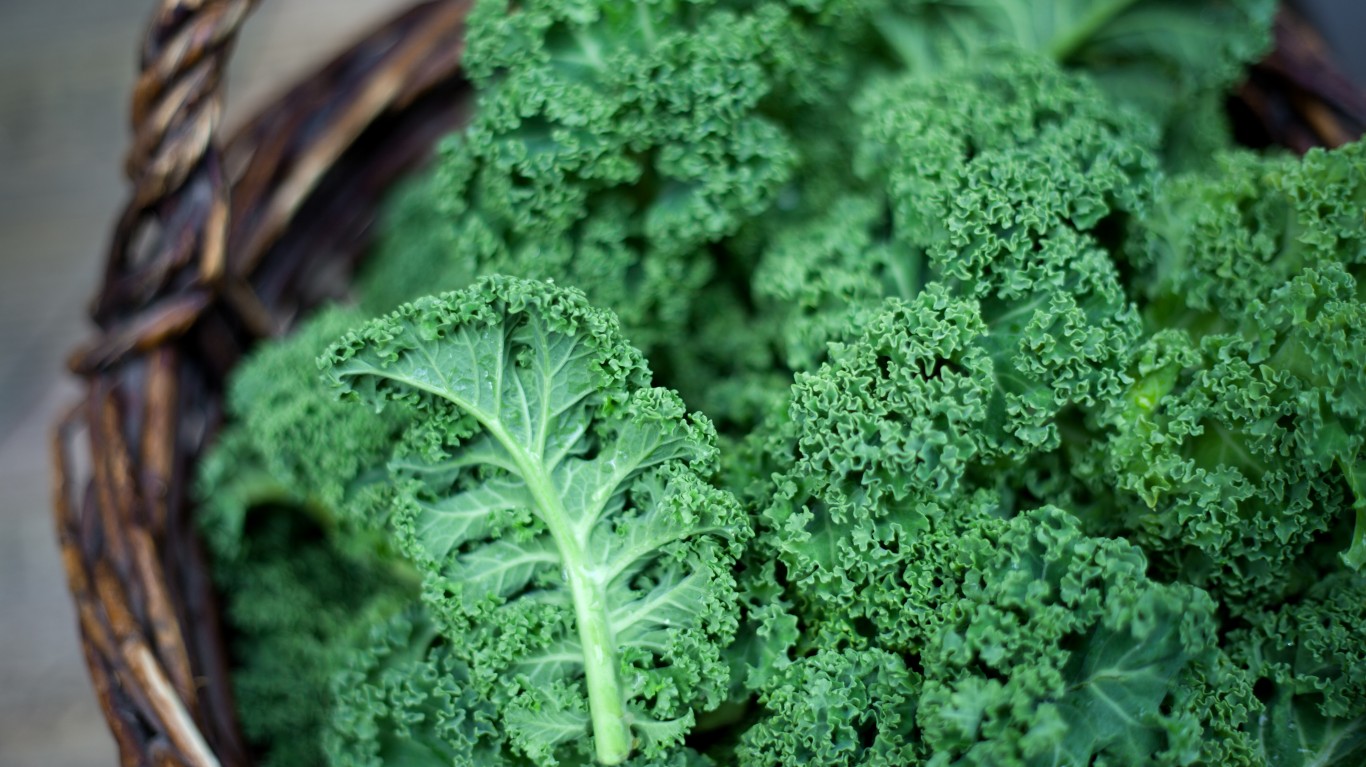
13. Kale
This ubiquitous vegetable, which is one of the most pesticide-contaminated foods on the market, will last about a week in the refrigerator if you don’t wash it until you’re ready to use it. If you do wash it, even if you think you’re drying it thoroughly, some moisture will remain and the leaves will wilt and possibly start sprouting mold.
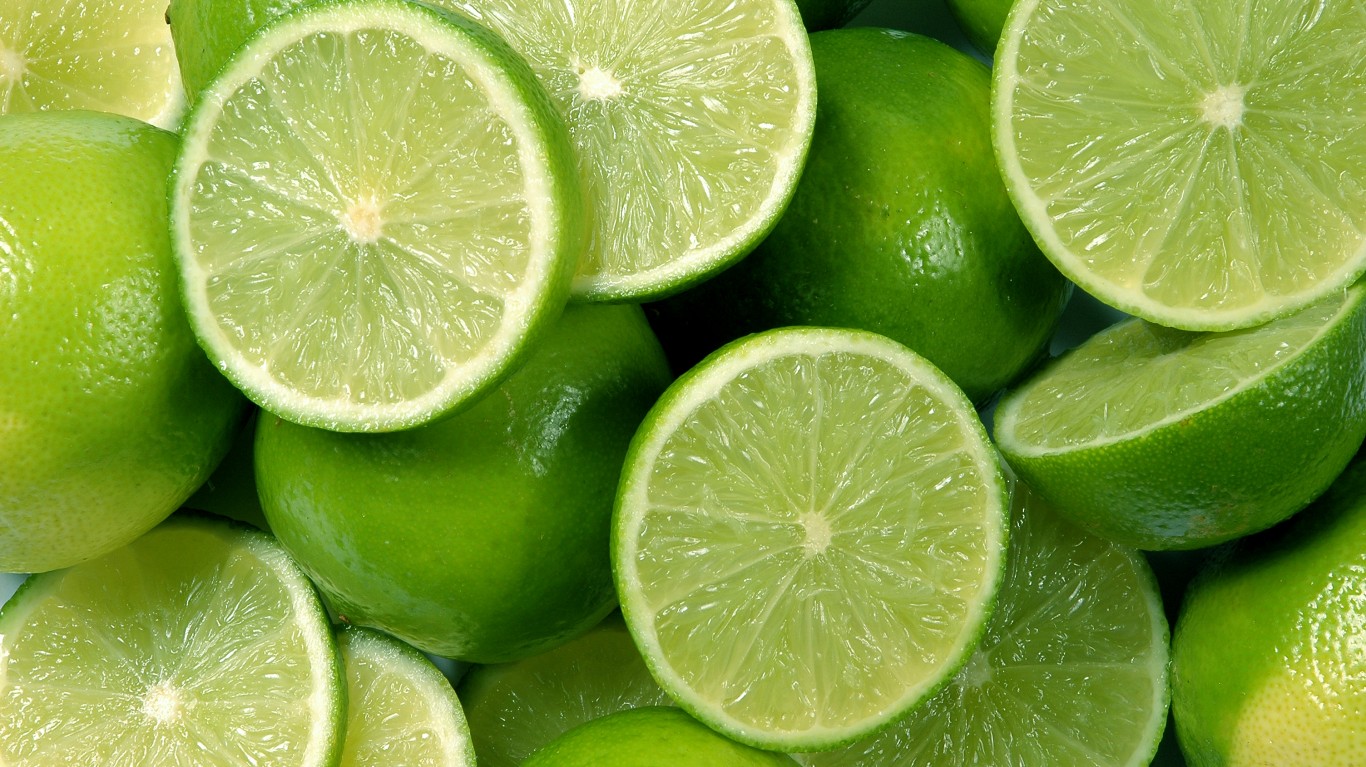
14. Limes
Fresh limes are reasonably hardy, typically lasting for two to four weeks after harvest at room temperature and up to two months in the refrigerator. Unfortunately, they might already be several weeks old by the time you buy them at the market. The problem with limes isn’t usually mold — it’s that unlike other kinds of fruit that get mushy as they age, limes “spoil” by turning brownish and hard, with their juice virtually drying up.
[in-text-ad-2]
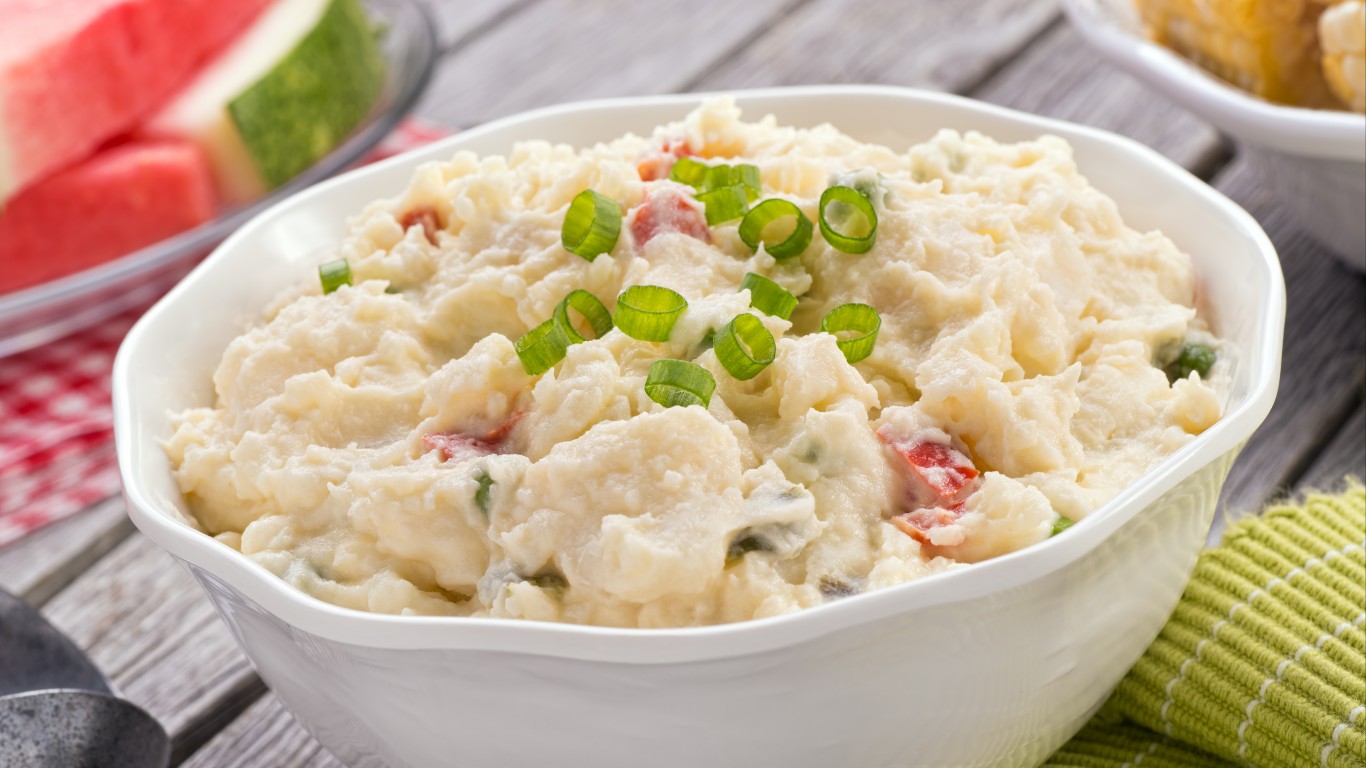
15. Mayonnaise-dressed foods
Savvy picnickers know that potato salad, mayonnaise-dressed sandwiches, and other dishes made with mayo can be among the most dangerous things to eat at an outdoor meal, because raw eggs (once out of their protective shells) are a fertile breeding ground for bacteria. Anything made with mayonnaise should be kept cold until mealtime, and uneaten portions should go back in the fridge as soon as possible — and be discarded after no more than three days.

16. Mushrooms
Most mushroom varieties have a high moisture content, which invites mold and mildew to form. Wild varieties, like ceps, chanterelles, or morels, are particularly susceptible, and should be consumed as soon as possible after purchase. Cultivated mushrooms, including portobellos and shiitakes, will last up to ten days in a paper — not plastic — bag in a cool, dark place. The pre-sliced variety will probably start to go off in half that time.
[in-text-ad]

17. Olive oil
Most vegetable oils — canola, corn, peanut, etc. — will last in the pantry for a year or more. Olive oil is more susceptible to spoilage; if it’s not stored properly — tightly sealed, in a cool, dark place — it can turn rancid within six months or less, developing what is sometimes described as a “winey” smell. Flavored olive oils may spoil more quickly, and are best stored in the refrigerator.

18. Raw poultry
Raw chicken and turkey are notorious for being contaminated with Campylobacter, Salmonella, or other bacteria, and for that reason, should always be cooked or frozen within a couple of days of purchase. (You’ll know it’s gone bad by its rank odor.) Even unspoiled poultry should be handled very carefully, though. According to the CDC, make sure leaking juices from the package don’t touch other food; wash hands in warm soapy water for 20 seconds before and after handling it; use a separate cutting board for it; don’t wash it (or bacteria will contaminate the sink); cook it to an internal temperature of at least 165ºF; and refrigerate or freeze leftovers within two hours.
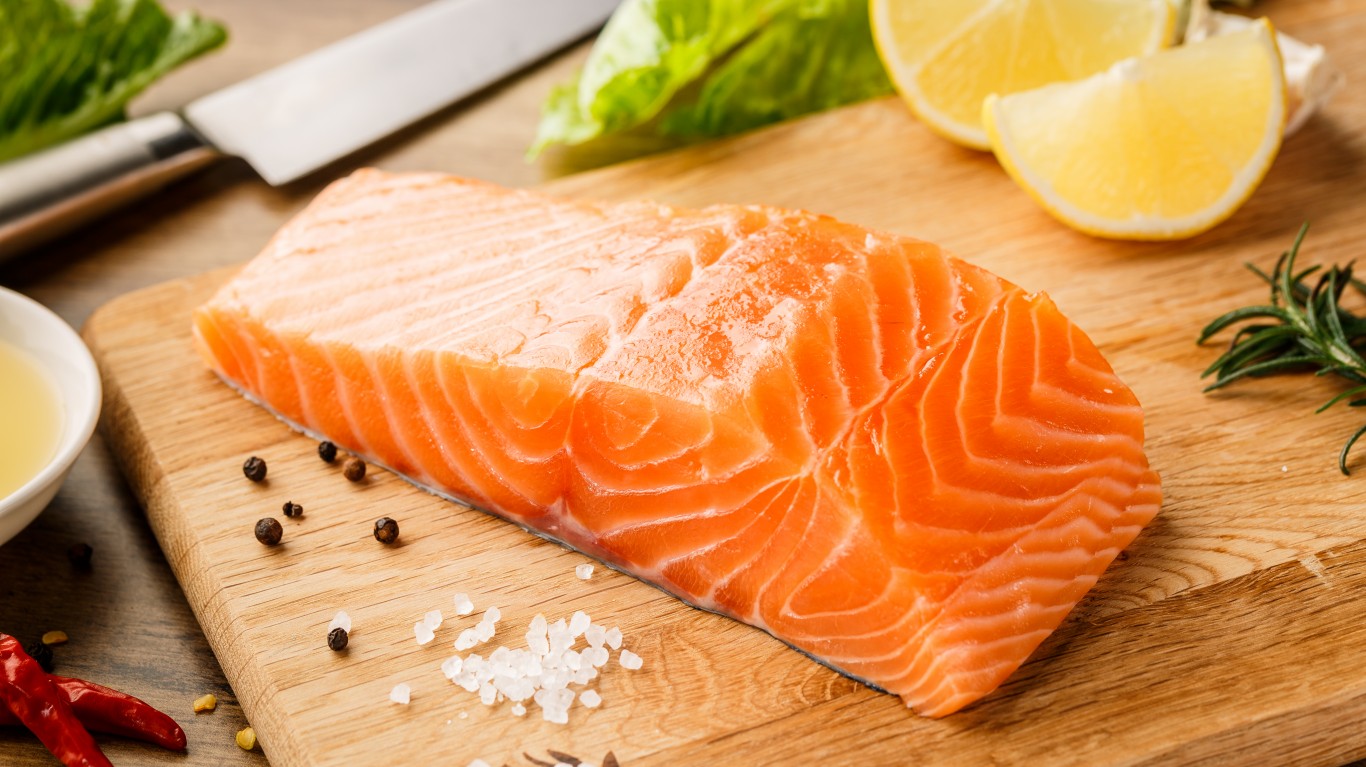
19. Raw seafood
Fish often contain varieties of bacteria that have adapted to colder temperatures — so-called SSOs, or specific spoilage organisms — so refrigeration doesn’t always stop it from going bad quickly. help as much as it does with other foods. The healthy fats and oils that make many kinds of fish and shellfish so good for us can also turn rancid within several days, giving the seafood an unpleasant flavor.
[in-text-ad-2]

20. Sliced deli meats
Commercial packaged deli meats are processed with nitrates, nitrites, and other preservatives, and usually last for a week or ten days if refrigerated. Unprocessed meats, especially store-roasted sliced turkey and ham, should be consumed within four or five days, even if they’re well-wrapped and refrigerated. If the surface of the meat begins to grow slimy and the turkey has a pronounced odor, it should go into the trash.
Detailed findings & methodology:
When we say that foods “spoil,” we’re talking about several different things. Some develop mold or mildew, which are two kinds of fungus. (Mildew is usually light in color and grows on the surface of food, while mold is typically black or green and present underneath the surface.)
Other foods foster bacterial growth, becoming toxic and in some cases life-threatening if consumed. Still others undergo enzymatic changes through oxidation, developing undesirable flavors and aromas — or just get soggy or dried out, and thus unpleasant (or impossible) to use.
It makes sense on several levels — practical, economic, ethical — not to be buying groceries that we’re not going to eat in these troubled times. 24/7 Tempo has assembled a list of foods that are particularly susceptible to rapid spoilage. These aren’t necessarily things we should never buy, but they’re certainly things we should all think twice about stocking up on.
Are you ready for retirement? Planning for retirement can be overwhelming, that’s why it could be a good idea to speak to a fiduciary financial advisor about your goals today.
Start by taking this retirement quiz right here from SmartAsset that will match you with up to 3 financial advisors that serve your area and beyond in 5 minutes. Smart Asset is now matching over 50,000 people a month.
Click here now to get started.
Thank you for reading! Have some feedback for us?
Contact the 24/7 Wall St. editorial team.